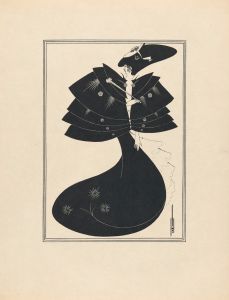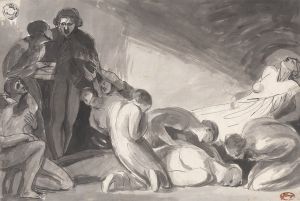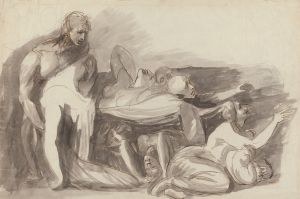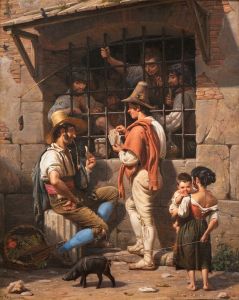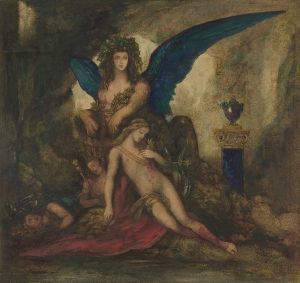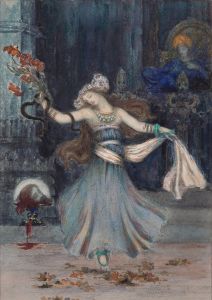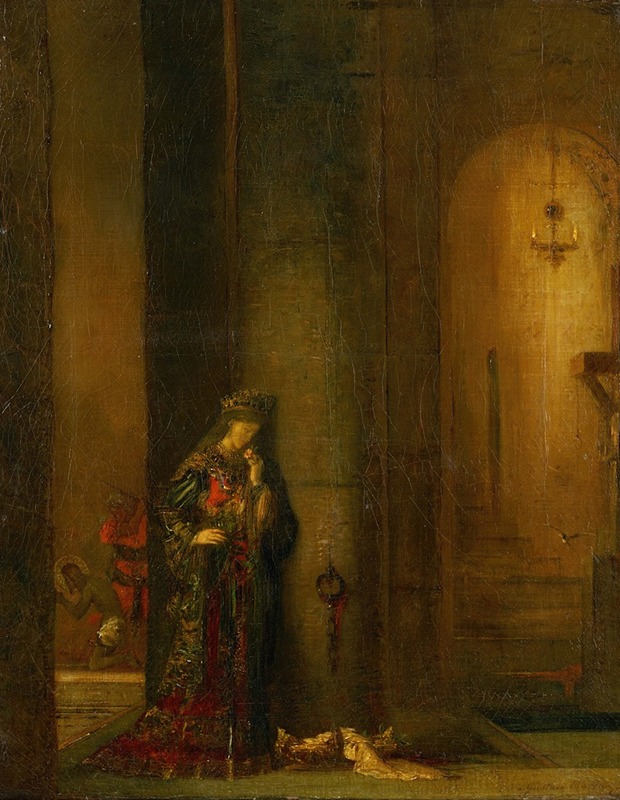
Salome At The Prison
A hand-painted replica of Gustave Moreau’s masterpiece Salome At The Prison, meticulously crafted by professional artists to capture the true essence of the original. Each piece is created with museum-quality canvas and rare mineral pigments, carefully painted by experienced artists with delicate brushstrokes and rich, layered colors to perfectly recreate the texture of the original artwork. Unlike machine-printed reproductions, this hand-painted version brings the painting to life, infused with the artist’s emotions and skill in every stroke. Whether for personal collection or home decoration, it instantly elevates the artistic atmosphere of any space.
"Salome at the Prison" is a painting by the French Symbolist artist Gustave Moreau, created around 1873-1876. Moreau is renowned for his intricate and imaginative works that often draw on mythological and biblical themes, and this painting is no exception. It depicts the biblical story of Salome, a narrative that has fascinated artists for centuries due to its dramatic and sensual elements.
The painting portrays Salome, a figure from the New Testament, who is often associated with the beheading of John the Baptist. In the biblical account, Salome is the daughter of Herodias and the stepdaughter of Herod Antipas. Her dance before Herod pleased him so much that he promised to grant her any wish. At her mother’s behest, Salome requested the head of John the Baptist on a platter, leading to his execution.
In "Salome at the Prison," Moreau captures a moment of intense emotion and drama. The painting is characterized by Moreau's typical use of rich colors, detailed ornamentation, and a dreamlike atmosphere. Salome is depicted in an opulent setting, adorned with luxurious garments and jewelry, which reflects Moreau's interest in exoticism and his meticulous attention to detail. The setting is both sumptuous and somber, suggesting the dual themes of beauty and death.
Moreau's interpretation of Salome is complex; she is both a seductress and a tragic figure, caught in a web of familial and political intrigue. The painting does not explicitly show the act of beheading but instead focuses on the psychological tension and the enigmatic presence of Salome. This approach is typical of Moreau, who often preferred to suggest rather than explicitly depict dramatic events.
The work is a testament to Moreau's skill in blending narrative with symbolism. The intricate patterns and textures in the painting invite viewers to explore its layers of meaning, while the use of light and shadow adds to the overall mood of mystery and foreboding. Moreau's Salome is not just a character from a biblical story but a symbol of the eternal themes of desire, power, and fate.
"Salome at the Prison" is part of Moreau's broader exploration of the Salome theme, which he revisited in several works throughout his career. This particular painting is housed in the Musée Gustave Moreau in Paris, a museum dedicated to the artist's life and work. The museum provides insight into Moreau's creative process and his fascination with mythological and biblical subjects.
Gustave Moreau's work, including "Salome at the Prison," had a significant influence on the Symbolist movement and later artists. His emphasis on imagination, emotion, and the symbolic potential of art resonated with contemporaries and continues to captivate audiences today. Moreau's paintings, with their rich iconography and emotional depth, invite viewers to ponder the complexities of human experience and the mysteries of the divine.





